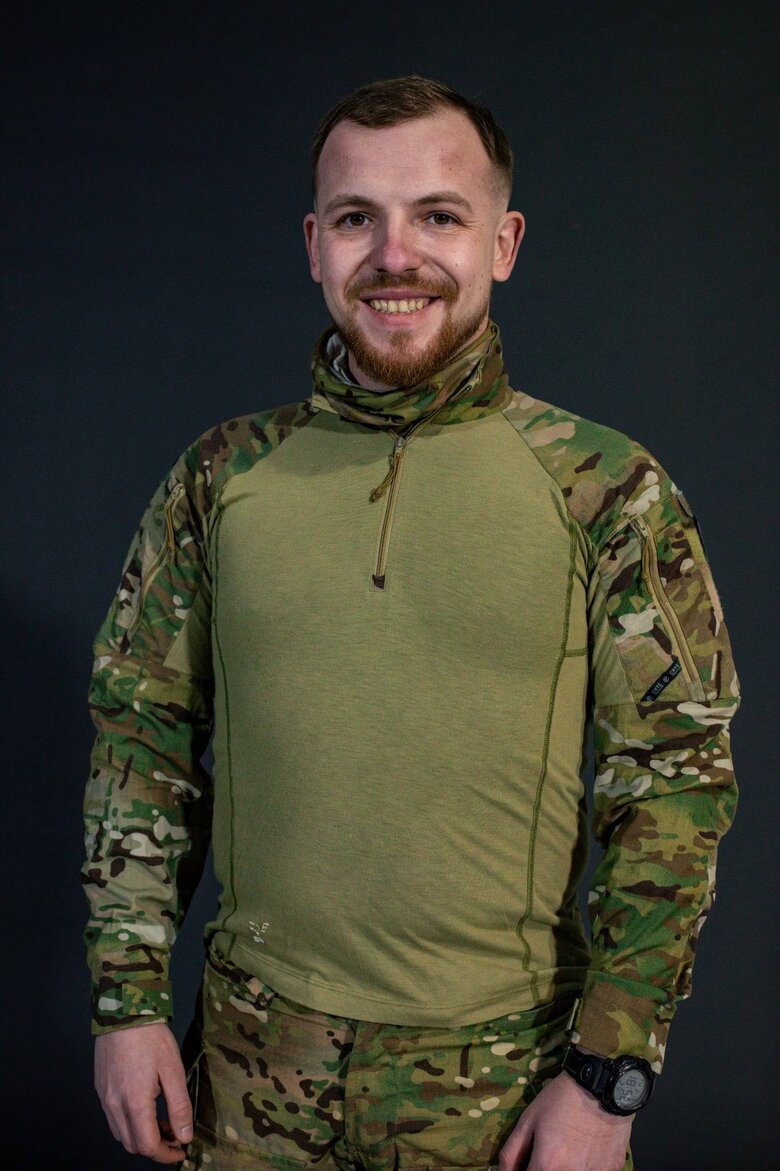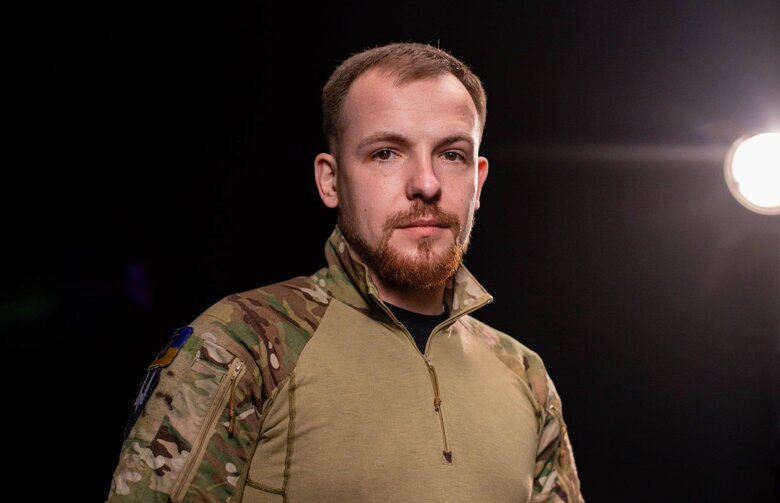Deputy’s favourite mortars: incredible story of SOF fighter with unusual call sign 13
A senior operator from the 3rd Regiment explains why joining the Special Operations Forces (SOF) is worth it.
Junior Sergeant with the callsign "13" serves in the Special Operations Forces. In civilian life, he was a People`s Deputy; in the military, he carried out combat missions, sustained injuries, and went through rehabilitation. Today, he is an ambassador for the SOF — passing on combat experience, sharing knowledge, and inspiring others with his strength, faith, and resilience.
– You’ve been with the SOF since 2019. What brought you, a young and already well-known guy in the city, to the military?
– I studied history at the Kropyvnytskyi Pedagogical University. I was engaged in social processes, especially those with a patriotic focus. I collected various aid for the Armed Forces and organized paramilitary courses. At 20, I decided to get actively involved in political life and became the youngest member of the Kropyvnytskyi City Council. Over three and a half years, I managed to implement some interesting initiatives. At the same time, I became increasingly immersed in military matters, the war in Donbas was ongoing, and many acquaintances joined the military. After three and a half years, I decided it was time to leave politics and join the military. For me, serving in the Armed Forces is an indicator of patriotism. At first, I thought about joining an infantry unit where I had some contacts. But by chance, I met a friend who was a special forces operative, and during a heartfelt conversation, he inspired me. I doubted I could do it, but I promised him I would try.
– What were the requirements for candidates in the Special Operations Forces six years ago? Can you compare them to the current ones?
– Some physical training requirements I was able to compensate for with other qualities. Ultimately, I signed the contract and became a Special Operations Forces fighter. I joined a combat group where I mastered all combat specialties. That’s exactly what attracts people to the SOF, the utmost focus on training and acquiring practical skills. Here, everyone must be able to do everything: know combat tactics, medicine, engineering, communications, operate vehicles, shoot any weapon, maintain it, and even repair it. Over the years, the only positions I probably haven’t held are tank mechanic-driver or aircraft pilot. As part of the group, I carried out combat operations.
– The SOF sees itself as a pack, where everyone is ready to come to each other’s aid. How was trust built within your group? Were there any rituals or unwritten rules?
– There are always senior members in the group who support and train the younger ones. But the strongest factor is an objective assessment of the situation. We must function as a cohesive team and achieve results together!
Within the group, you observe how others behave, and gradually you become part of it. This process doesn’t happen overnight, but once it begins, it’s irreversible. I’ve never seen the kind of brotherly support, strength of spirit, and deep mutual understanding anywhere else like we have in the SOF. Our teams sometimes act as a lifeline for comrades from other branches of the military. I recall a case when we were en route to a mission and received word that a neighboring unit had suffered heavy casualties. They had no medic, so we had to quickly set up a field hospital in a shelter and provide medical assistance. For a while, we became a group of medics. This is a clear advantage of the SOF, each of us has a primary specialization, but at the same time, we’re trained to operate across multiple disciplines.
– You often use the word "group." What exactly is this unit, and what are its functions?
– Troops of the line fight as companies or battalions, while we carry out missions as groups. I won’t go into details about their composition, size, or other specifics. For each of us, the group is a family, a pack, in the best sense of the word. We live as one, and sometimes we know more about each other than our wives or parents do. In the group, jokes and teasing go hand in hand with support and trust. We share both joy and hardship together.
– What was your role in the group? What specialization did a historian by education end up mastering?
– Our group had been operating in the same formation for several years and accomplished a lot. I hold the rank of junior sergeant and, prior to my injury, was essentially the deputy group commander. During my service, I gained the knowledge required for every combat role within the group. In the SOF, all positions are cross-trained — the senior must always know who can step in if needed. We place a strong emphasis on training, and internal preparation within the SOF is far more effective than standard military training. Even during rotation, once you arrive at the permanent deployment point (PDP), you're constantly in motion, constantly engaged in something. Medical training, topography, UAVs, mastering new weapons… It's a nonstop process that becomes a central and inseparable part of your life.
– By the way, coming back to education and your background, as a historian, which historical period interests you the most personally?
– I love this field. As for a specific era, I focused on the Golden Age of the Cossacks and the events of the 14th to 16th centuries on the territory of modern-day Ukraine, a period that remains understudied and underappreciated.
– Have there been situations on the front line when emotions got the better of you?
– You always have to keep a cool head. That’s something the SOF trains for as well. I recall a story when, after recovery, our team went on a mission in the combat zone. We completed it and were withdrawing calmly and according to plan. Unfortunately, the enemy spotted us and opened fire with everything they had. What should have been a calm retreat turned into running from cover to cover, where we were repeatedly hit again. In that critical moment, we were one, helping each other in every way! And when we reached safe ground, looking at each other, we said in unison: "How much we missed this!"
– I see you’re not superstitious if you chose the callsign "13," right?
– Absolutely. We had various call signs. The last one is numeric so that if the enemy intercepts communications, they have fewer clues.
– What’s your favorite weapon?
– The mortar. Definitely. For me, it’s something perfect and wonderful. The 60mm caliber is surgically precise, and the 120mm one destroys everything it reaches.
– While serving in the Armed Forces of Ukraine, did you anticipate the full-scale invasion?
– About a month before it began, it seemed like just another game and provocation. We saw force build-ups, maneuvers, exercises, but that had happened before, just on a different scale. However, the closer we got to the ominous date, the more obvious the invasion became; we had real intelligence. On February 24, 2022, our group was already on a mission.
– Your combat path, but not your military career, was halted by injury...
– It was during the counteroffensive in summer 2023. We were clearing a settlement. The final stretch consisted of two houses; our group entered the area. I was waiting for the second-in-command to hand over the sector and begin advancing. My comrade, while moving closer, triggered a mine just a meter from me. At that very moment, another explosion went off right under my foot. The evacuation was prolonged… My friend lost a leg, and doctors fought for six months to save mine. Eventually, I returned to the military.
– And you continue to serve effectively…
– I’m not taking part in combat missions at the moment. Our group no longer exists in its original formation — some were promoted, others transferred to different units. I now hold a rear-line position. I devote a lot of time to training newcomers: I conduct sessions on firearms training, mission planning, reconnaissance, and medical care. The SOF has a strong understanding of how crucial both general and specialized training is — and places great emphasis on it.
– Having acquaintances among People`s Deputies and other officials, have you ever used this option to help supply your unit?
– Never. Our 3rd SOF Regiment is fully supplied. We have transport, weapons, necessary protective gear, and equipment. Individual needs can be taken care of independently. Sometimes volunteers also provide support.
Today’s Armed Forces are a reflection of our society. They bring together people of various professions, ages, and lifestyles. As for myself, I’ve never asked for any special privileges. I've always stood equal with everyone else, eating porridge from the same pot.
– Were you surprised when you were offered to become an SOF ambassador?
– It was unexpected, but in a way, I had already been performing some of those functions. I'm no longer in a combat group, so I can show my face and speak publicly — meet people at sporting events or give talks at universities.
– What does it feel like to fight not with firearms, but with words?
– I want to be useful to the military wherever I'm needed. The responsibilities of an ambassador don’t interfere with my primary duties — in fact, they help me see the development of our units from a different perspective.
Some people are intimidated by the abbreviation "SOF," thinking it’s a force for superhumans. I often have to bust that myth, using myself as an example. Yes, someone with physical limitations can’t serve in the SOF, but that aspect can be improved, and everything else is taught by professionals at training centers. What I consider most important is motivation, a person’s drive to gain new knowledge and skills, and their willingness to contribute to our victory.
Every civilian must understand that their turn to serve will come sooner or later. This is our shared country, and it is our duty to defend it. So, taking this opportunity, I encourage everyone to visit an SOF recruitment center, check out the vacancies, and choose a unit.
Dmytro SHAPOVAL
Want to join the Special Operations Forces? Contact SOF Recruiting!
Our contacts:
Addresses:
- Building 1, 7 Obolonska Naberezhna, Kyiv city;
- 2 Oleksandra Polia Avenue, Dnipro city;
- 16 Soborna Street, Khmelnytskyi;
- 53/35 Viktora Chmilenka Street, Kropyvnytskyi city


